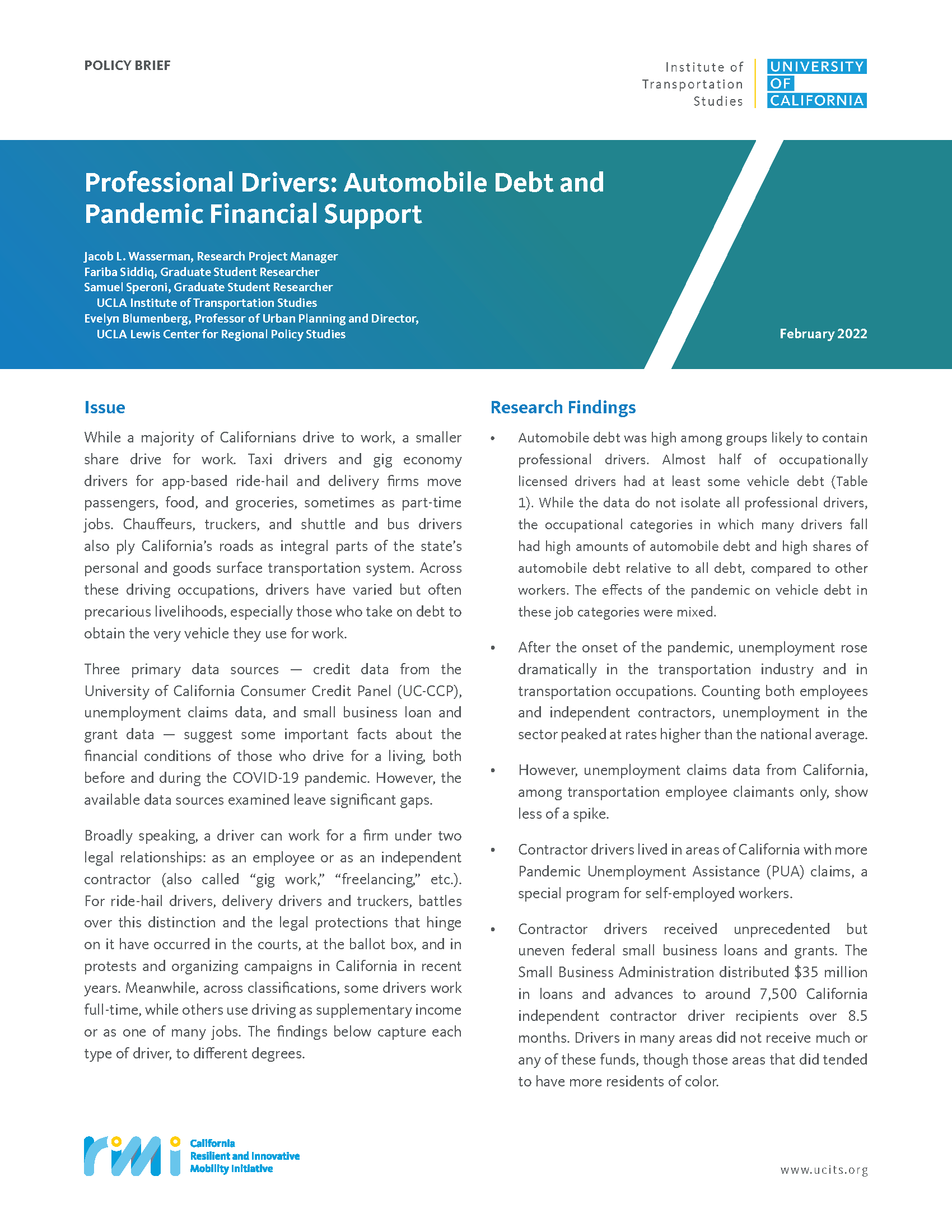Date: February 8, 2022
Author(s): Jacob L. Wasserman, Fariba Siddiq, Samuel Speroni, Evelyn Blumenberg
Abstract
While a majority of Californians drive to work, a smaller share drive for work. Taxi drivers and gig economy drivers for app-based ride-hail and delivery firms move passengers, food, and groceries, sometimes as part-time jobs. Chauffeurs, truckers, and shuttle and bus drivers also ply California’s roads as integral parts of the state’s personal and goods surface transportation system. Across these driving occupations, drivers have varied but often precarious livelihoods, especially those who take on debt to obtain the very vehicle they use for work.
About the Project
This project synthesizes three primary data sources—credit data, unemployment claims data, and small business loan and grant data—to explore the financial conditions of those who drive for a living before and during the COVID-19 pandemic in California. Automobile debt was high among groups likely to contain professional drivers. The occupational categories in which many drivers fall had high absolute and relative levels of automobile debt compared to other workers. After the onset of the pandemic, unemployment rose dramatically in the transportation industry and in transportation occupations, peaking at rates higher than the national average. However, state unemployment claims data, among transportation employee claimants only, show less of a spike. Contractor drivers lived in areas with more Pandemic Unemployment Assistance claims, a special program for self-employed workers like gig drivers. Finally, contractor drivers received unprecedented but uneven federal small business loans and grants. Drivers in many areas, however, did not receive much or any of these funds, though those areas that did tended to have more residents of color. Assessing the full effect of the pandemic on professional drivers’ debt and finances will require additional and better data, particularly workforce data from gig economy firms that contract with drivers.


